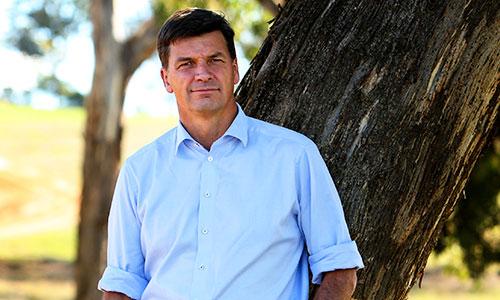Opinion: Leadership needed as opportunity knocks in farming
Monday, 29 June 2015
Australian Financial Review, p 39 Governments hampered the mining industry with taxes, costs and slow approvals. Now the farming sector is set to take off, we must help, not hinder it.
Five years ago I took the tools and techniques I had used as a consultant since the early 2000s to forecast growth in global demand for minerals and energy, and applied it to agriculture. The insights were clear and remarkable. For decades I had heard about the sleeping giants of Asia, and the voracious appetite that would one day drive our farming sector. That dream is now becoming a reality.
Global population growth is just the beginning. More important is the impact of rising wealth on calorie consumption, and the shift from carbohydrate-dominant diets towards proteins, oils, sugar, fruit and vegetables. All of this requires huge gains in production per unit of land and water, at a time when agricultural productivity is falling.
As the dollar drops, high international soft commodity prices are translating to higher Australian prices for beef, lamb, mutton, wool and some grains. Other commodities will follow, often with volatility. Australian produce is highly regarded in many Asian markets, if only for food safety reasons. And we have among the highest endowments of agricultural land and water per person in the world - China and India aren't even close.'
Despite the opportunity, we've let ourselves down before in the mining sector.
We imposed cumbersome taxes, slow approvals and excessive costs on a sector that would face tougher times as prices dropped to sustainable levels (still well above historical trends). Poor policy at the peak has led-to serious vulnerabilities, generating an unhelpful fracas about iron ore cartels. We can't afford to make the same mistakes for soft commodities.
Capturing global agriculture opportunities requires diverse "clusters" of participants to mobilise, overcoming the unavoidable fragmentation of agriculture.
Farmers, processors, bulk handlers, ports, researchers, consultants,' accountants, traders, marketers and all levels of government need to seize the day. Attempts to centralise will not work. Instead we need a shared picture of what is possible and real determination to get on with it across all stakeholders.
Government is only part of the picture, but its role matters. We need to improve and protect access to markets, by reducing trade and non-trade barriers, reducing economic costs, mobilising new relationships and supporting strengthened brands and supply chains. This has been the government's priority in the past two years, and the results are clear.
Government can also facilitate investment in crucial infrastructure: water, transport, processing and telecommunications. The 500 new mobile phone towers announced last week and reprioritisation of the national broadband network (including the launch of two new satellites), are important steps in this direction. So too were the recently announced water and transport infrastructure initiatives in northern Australia, which remains an enormous opportunity for Australian agriculture.
Serving regional areas with quality supply chains and infrastructure is tough, not just because of the huge land areas. Natural monopolies are common, thwarting trust and investment Targeted, effective competition policy is crucial, as are clever business structures. Across the Tasman we see the Kiwis'global domination of the dairy sector driven by a major farmer-owned co-operative; we should take note and likewise consider clever structures that foster farmer self-reliance.
A serious "agtech" sector is ours for the taking. Innovation has always been the life blood of Australian agriculture. With accelerating improvements in genetics, GPS, remote sensing and "big data", much depends on timely commercialisation and utilisation of our ideas. The government's . food and agricultural growth centre will encourage more private sector involvement in research and development alongside $750 million a year in current funding.
Direct investment in farms and farmers is crucial, particularly given the rapid growth of debt, just as the pace of farm succession intensifies.
Better risk-management products will . help, particularly in times of drought, such as multi-peril risk insurance for grain producers.
Some of the investment in agriculture will come from offshore. This is essential and shouldn't frighten us if motives are sound, taxes are paid and monopolies are avoided. The truth is that offshore investors will fail without strong local management with serious skin in the game.
Our biggest gap is on the human capital side, with a real need for farmers to develop new skills in business management, exploiting new technologies and aligning farm enterprises with fast-growing new markets. Attracting and developing talented agricultural entrepreneurs is more important than ever, in a sector with long and proud history of entrepreneurship.
All studies of wealth creation tell us that when opportunity really knocks, you have to open the door with gusto. In Australian agriculture, opportunity is knocking.


